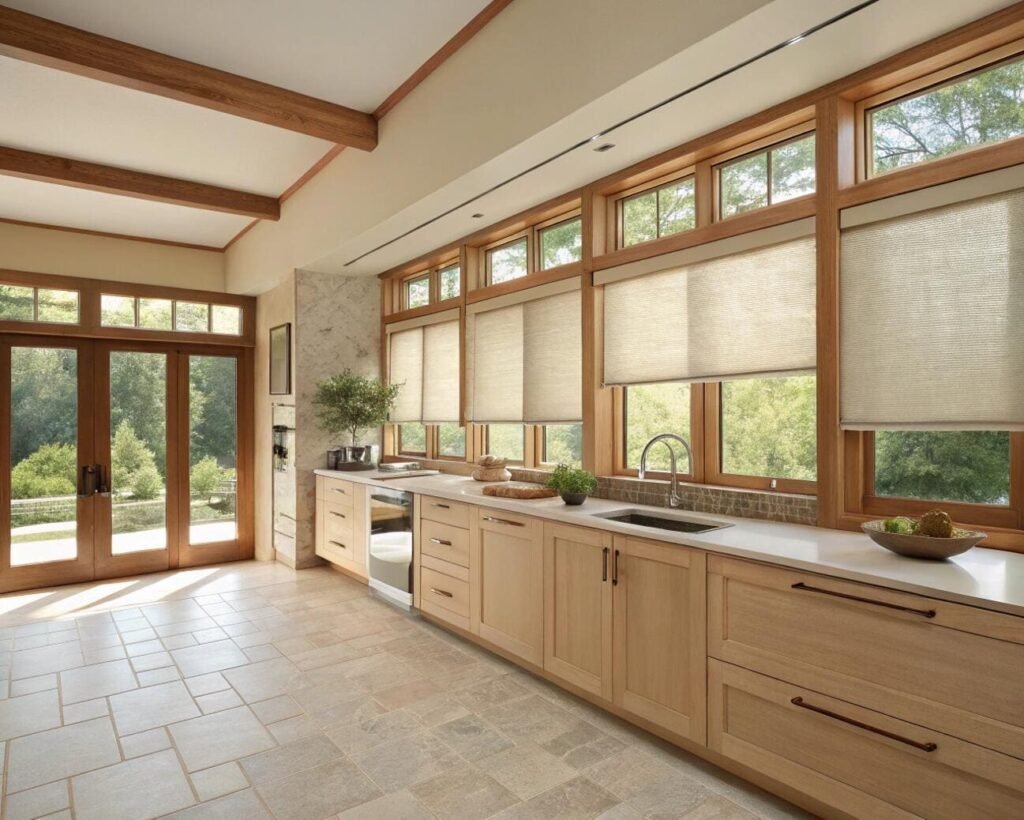Designing a LEED-certified building is a complex puzzle. You are carefully planning every detail to hit your point targets, but window treatments are often specified as an afterthought, leaving valuable credits on the table and compromising your project's performance goals.
Strategically specifying high-performance motorized blinds can directly contribute to multiple LEED credit categories, including Energy & Atmosphere, Indoor Environmental Quality, and Sustainable Sites. They are a crucial tool for managing solar heat gain, optimizing daylight, and improving thermal comfort, helping you achieve your desired certification level.

As a supplier for many green building projects, I've seen how integrating the right shading system from day one can make or break a project's LEED goals. It’s not just about adding blinds to the windows; it’s about making them an active part of the building's high-performance strategy. A well-specified shading system is one of the most cost-effective ways to earn points across multiple categories, and I want to show you exactly how.
What are LEED credits and how do they actually work?
You hear "LEED Certified" on every major project, but the point system can feel abstract and complex. This uncertainty makes it difficult to explain the value of specific components, like high-performance blinds, to your clients and stakeholders.
LEED (Leadership in Energy and Environmental design) is a point-based system where projects earn points for implementing strategies that improve performance across various metrics. These points add up to determine the level of certification: Certified (40-49 points), Silver (50-59), Gold (60-79), or Platinum (80+).
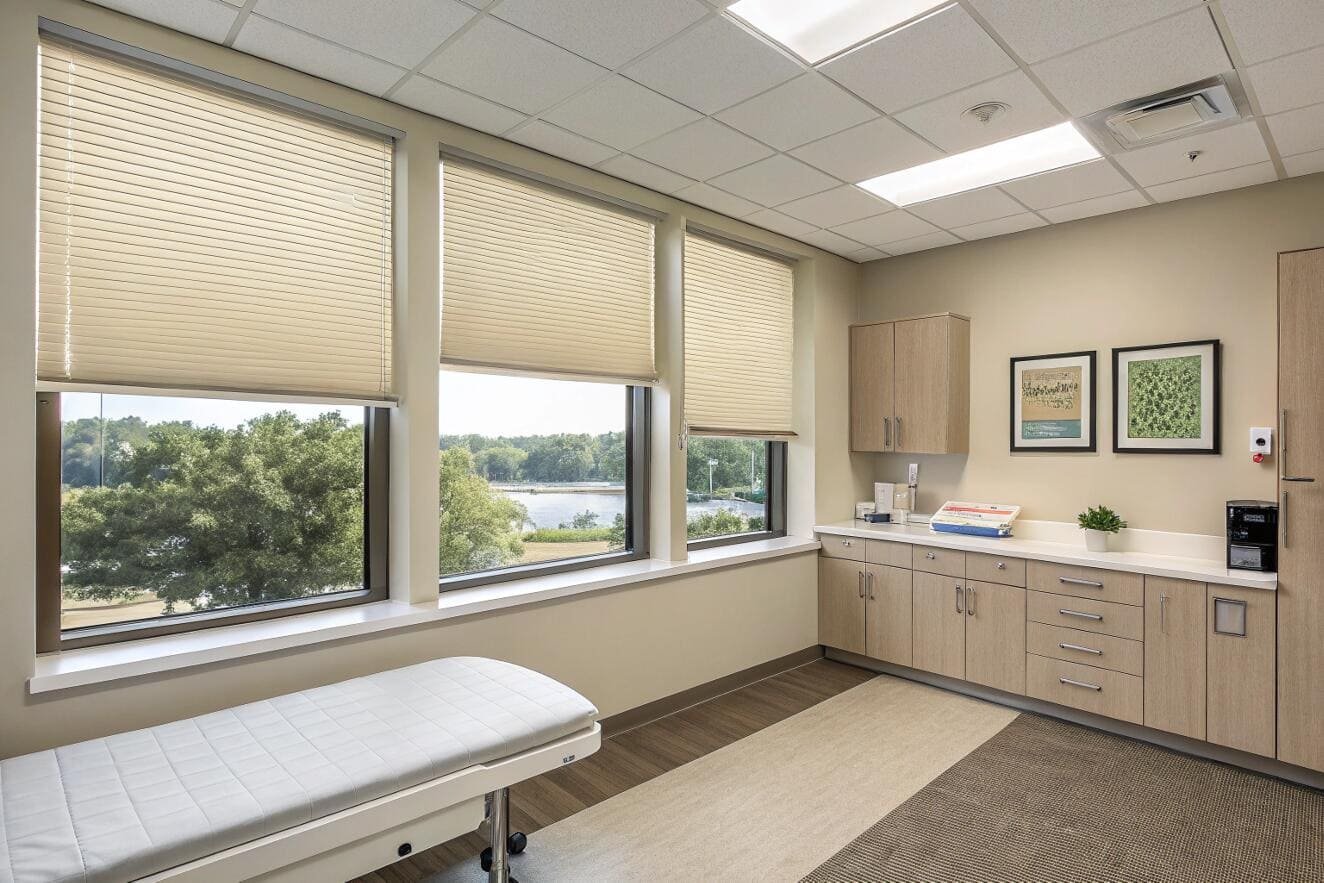
From a project procurement standpoint, you can think of LEED as a game of accumulation. Every point matters. The system is built on a series of "prerequisites" (mandatory practices) and "credits" (optional strategies that earn points). As a professional like Emma, your job is to identify the most efficient ways to gather the points needed to hit your target certification level. This means evaluating every building component, from the HVAC system to the window treatments, for its potential to contribute. For example, a basic blind might meet the project's aesthetic needs, but specifying an automated, high-performance blind directly helps you check the boxes for multiple credits, making it a much smarter investment for a LEED project.
Understanding the LEED Framework
The LEED rating system has several variations tailored to different project types. The most common one for new construction is Building Design + Construction (BD+C). Here's the simplified logic:
- Prerequisites: These are the mandatory minimums your project must achieve to even be considered for certification. They don't earn points, but they are the ticket to entry.
- Credits: This is where you earn your points. Each credit has a specific intent and a set of requirements. For example, the "Optimize Energy Performance" credit awards a large number of points based on how much your building's energy consumption is reduced compared to a baseline model.
- Documentation: This is a crucial, non-negotiable part of the process. For every credit you pursue, you must submit detailed documentation, calculations, and technical sheets to the U.S. Green Building Council[^1] (USGBC) for review. This is why having a supplier who can provide all the necessary technical data for their products is so important.
Which LEED credit categories can window blinds actually influence?
You know that high-performance blinds can save energy, but you're not entirely sure which specific LEED credits[^2] they apply to. This ambiguity makes it hard to justify the investment in a premium shading system during critical budget meetings.
Window blinds and their control systems directly impact three key LEED v4.1 credit categories: Energy & Atmosphere (EA), Indoor Environmental Quality (IEQ), and Sustainable Sites (SS). They contribute to credits for energy performance, daylighting, quality views, thermal comfort, and even light pollution reduction.
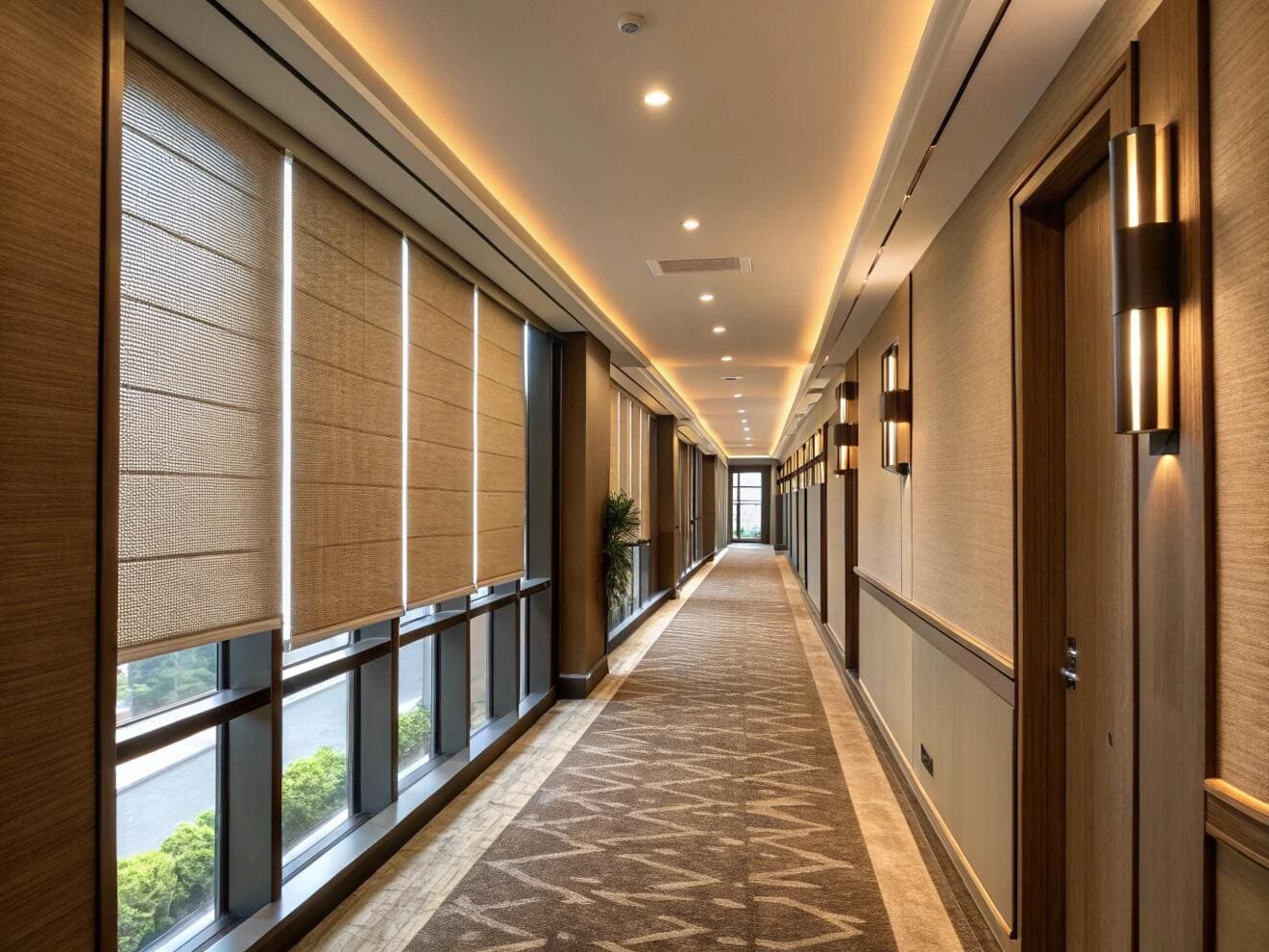
As a product supplier, I provide my partners with a "LEED cheat sheet" that connects our product features directly to these valuable credits. Understanding these connections is the key to leveraging your shading package for maximum points. It moves the conversation from "How much do the blinds cost?" to "How many points can these blinds help us achieve?". This reframes the entire discussion and highlights the product's role as a critical piece of the building's performance infrastructure.
Mapping Blinds to LEED Credits
| LEED Credit Category | Specific Credit | How Blinds Contribute |
|---|---|---|
| Energy & Atmosphere (EA) | Optimize Energy Performance | Automated motorized shades reduce solar heat gain, lowering the building's cooling load. This significantly improves the energy model performance, earning a large number of points. |
| Indoor Environmental Quality (IEQ) | Daylight | Translucent solar shades with a moderate openness factor can diffuse sunlight deep into the space, reducing the need for artificial lighting while controlling glare. |
| Indoor Environmental Quality (IEQ) | Quality Views | Specifying blinds with a higher openness factor (e.g., 5-10%) preserves the connection to the outdoors, a key requirement for this credit. |
| Indoor Environmental Quality (IEQ) | Thermal Comfort | Motorized blinds can be automated to respond to sun position and intensity, preventing radiant heat buildup near windows and improving occupant comfort. |
| Sustainable Sites (SS) | Light Pollution Reduction | Automated blackout shades programmed to close at night can ensure compliance by preventing interior light from spilling outside and disrupting nocturnal ecosystems. |
Is pursuing LEED certification actually worth the investment?
Project owners and financial stakeholders often question the high upfront costs associated with a LEED project. You need to build a solid business case to convince them the long-term operational savings and other benefits far outweigh the initial investment.
Yes, LEED certification is profoundly worth it. Independent studies consistently show that LEED-certified building[^3]s have significantly lower operating costs due to energy and water savings, command higher rental rates and sale prices, and have lower vacancy rates. The return on investment is clear and multifaceted.
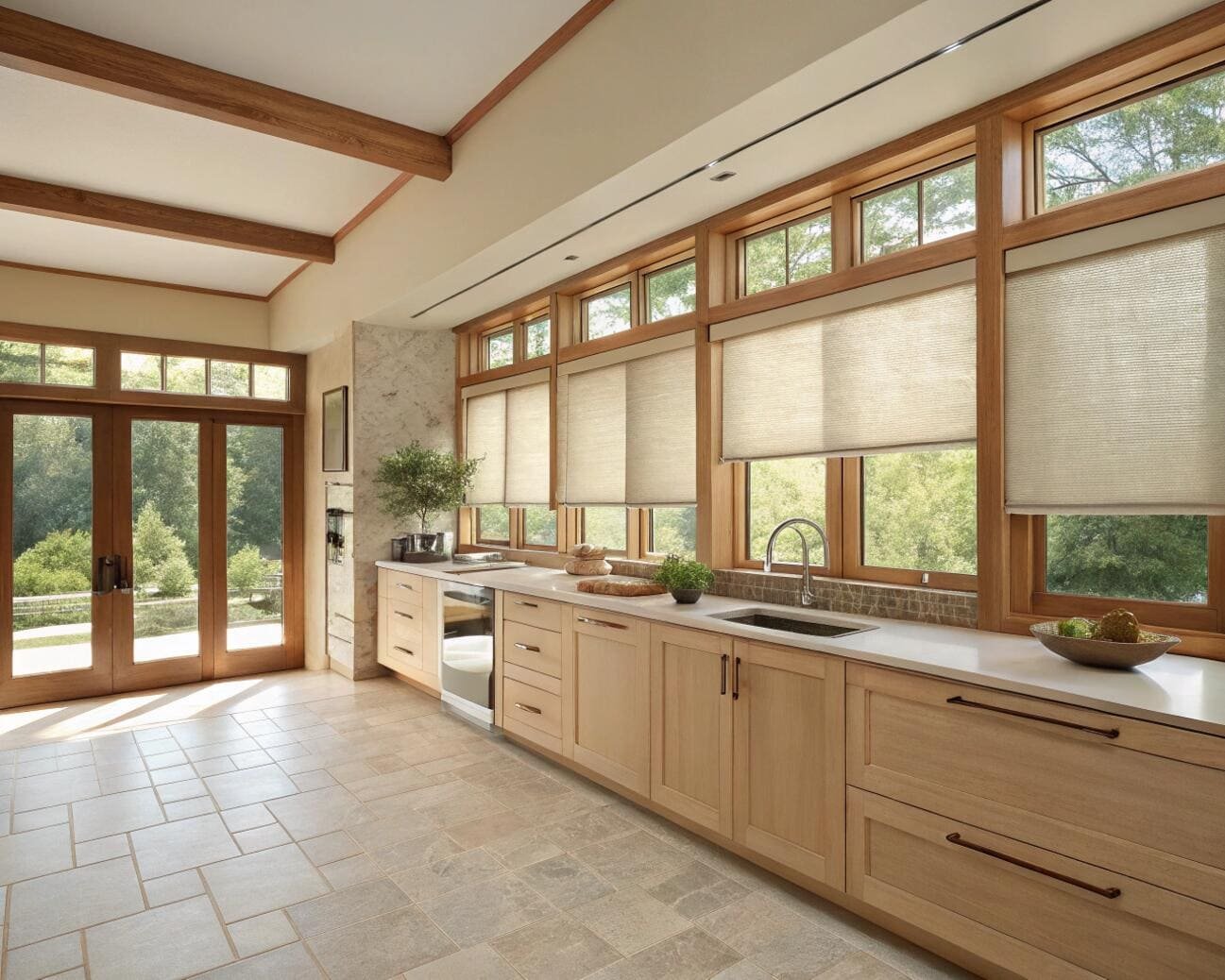
When I discuss this with developers, we move past the idea of LEED as simply an environmental gesture. We talk about it as a sound financial strategy. A LEED plaque is a universally recognized symbol of quality and high performance. It tells potential tenants that the building is not only efficient to run but also a healthier and more productive place to work. This market advantage is tangible. Data from real estate services like JLL has shown that LEED-certified buildings can see a rental premium of over 6% and a sales premium of over 10%. The energy savings[^4] alone often result in a payback period of just a few years for the initial green investments.
The Business Case for LEED
| Benefit Category | Description | Target Audience |
|---|---|---|
| Financial ROI | Lower utility bills (energy and water), resulting in lower TCO. Higher asset value, rental premiums, and faster leasing. | Building Owners, Investors |
| Occupant Wellbeing | Improved indoor air quality, better access to daylight and views, and superior thermal comfort lead to increased productivity and fewer sick days. | Tenants, Employees |
| Market Leadership | A powerful, visible commitment to corporate social responsibility (CSR) and sustainability, enhancing brand reputation. | Marketing, C-Suite |
| Risk Mitigation | "Future-proofing" the asset against rising energy costs and more stringent future environmental regulations. | Asset Managers, Developers |
How can motorized blinds help you earn LEED energy & atmosphere credits?
You are under pressure to reduce your building's energy consumption to earn those crucial points under the Energy & Atmosphere (EA) category. Relying on the HVAC system alone to do all the work is inefficient and extremely costly.
Motorized blinds are a powerhouse for the "Optimize Energy Performance" credit. By integrating with a BMS or using sun-tracking automation, they can reduce cooling loads by up to 25% by blocking solar radiation before it enters the building and becomes heat. This directly and significantly improves the building's energy model.
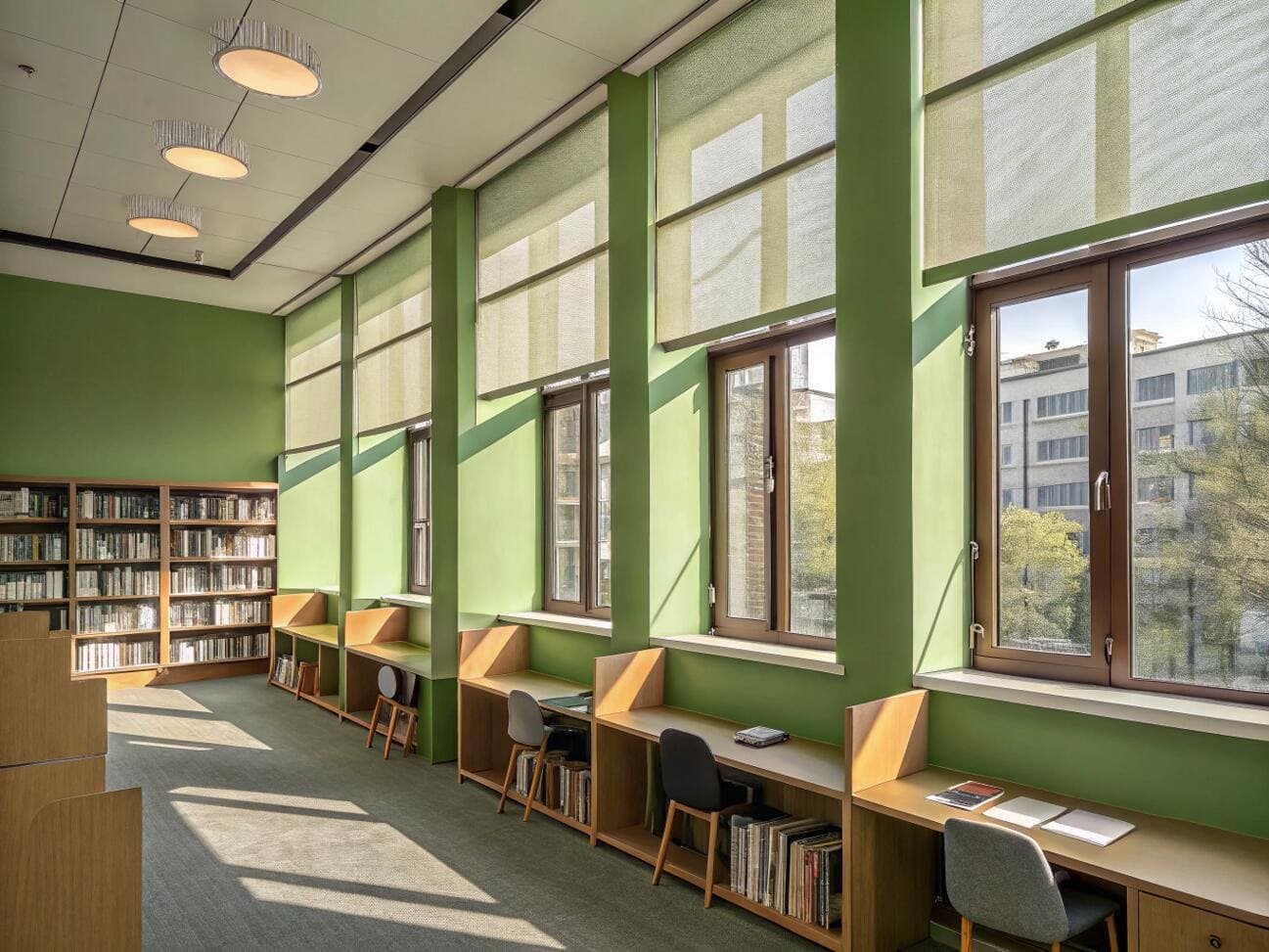
This is the single biggest contribution that a shading system can make to a LEED score. The "Optimize Energy Performance" credit can be worth up to 18 points in LEED v4.1, so any strategy that impacts it is critical. The key is automation. An energy model cannot rely on the hope that a building occupant will remember to close a manual blind. It can, however, rely on a motorized system that is programmed to respond to the sun's position every minute of every day. By specifying fabrics with a low Solar Heat Gain Coefficient (SHGC), you are creating a dynamic, insulating barrier. This proactive heat management means the HVAC system doesn't have to work as hard, which is exactly what the LEED energy model is designed to reward.
Can smart blinds help meet LEED light pollution reduction requirements?
Your architectural design includes extensive glazing, which is great for views but creates a major risk of light trespass at night. Manually closing hundreds of blinds every evening is impractical and unreliable, putting this straightforward LEED credit in jeopardy.
Yes, automated smart blinds are the perfect tool for achieving the "Light Pollution Reduction" credit (SS Credit). By scheduling all blinds to close automatically after business hours, they reliably prevent interior light from spilling outside, meeting the credit's strict requirements for facade luminance without any human intervention.
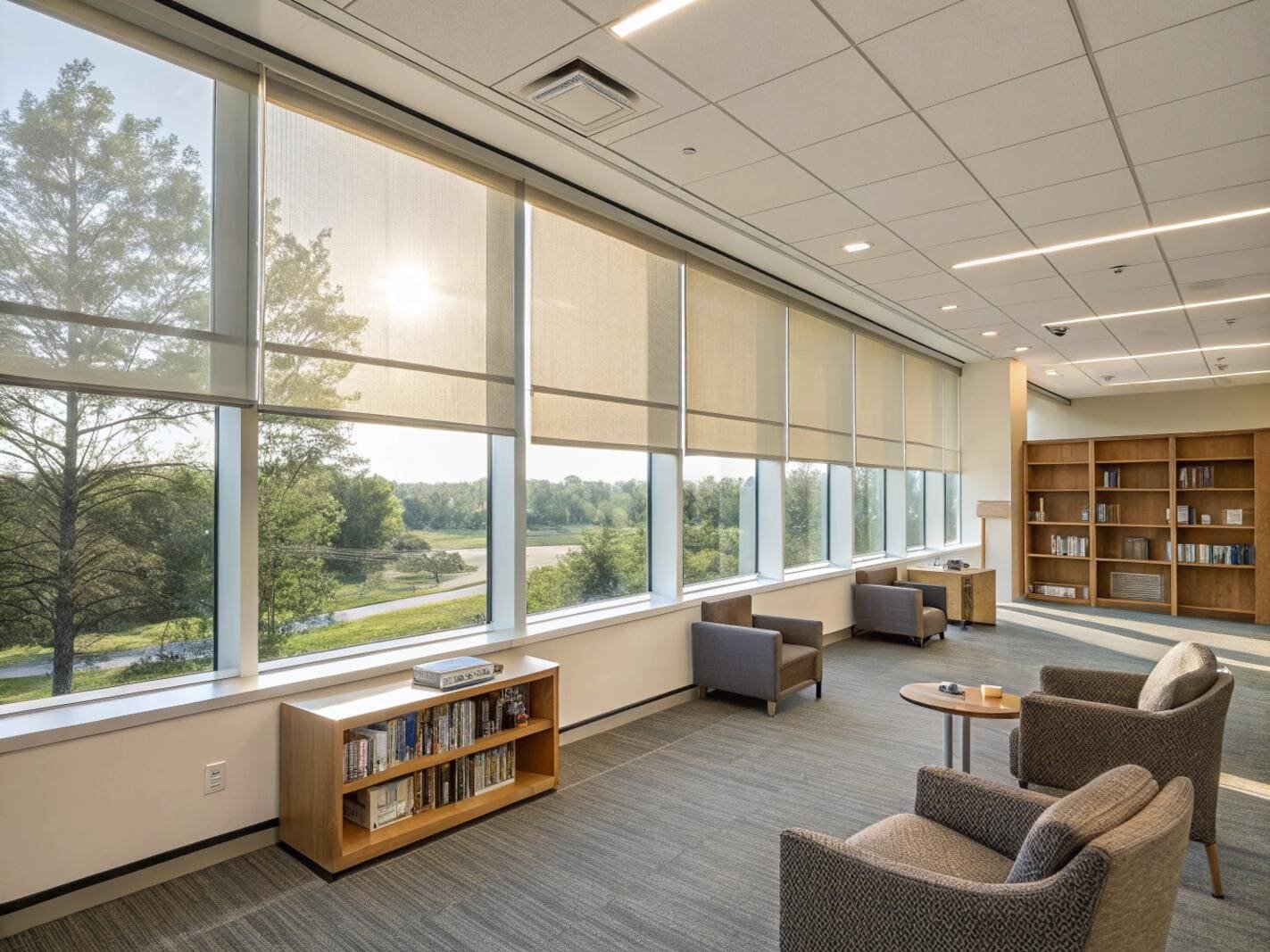
This is one of the easiest and most reliable points you can earn with the right technology. The intent of this credit is to reduce the negative impact of artificial light on nocturnal animals and the night sky. The LEED requirements are very specific about the maximum amount of light that can exit the building. The most foolproof way to comply is to simply ensure all your windows are covered at night. For a project manager like Emma, specifying a motorized system that is tied to the building's central clock or BMS is a "set it and forget it" solution. You program it once—"At 11 PM, send command: All Blinds to 100% Closed"—and you have guaranteed compliance every single night.
Can window blinds help you qualify for LEED thermal comfort credits?
You are getting feedback that occupants located near the windows are constantly complaining about being too hot from the sun or too cold in the winter. This radiant thermal discomfort can ruin the occupant experience and jeopardize your IEQ points.
Absolutely. High-performance window blinds are a primary strategy for achieving the "Thermal Comfort" credit (IEQ Credit). They directly control radiant temperature asymmetry by blocking intense solar heat gain[^5] in the summer and providing an additional insulating layer to reduce radiant heat loss to cold glass in the winter.
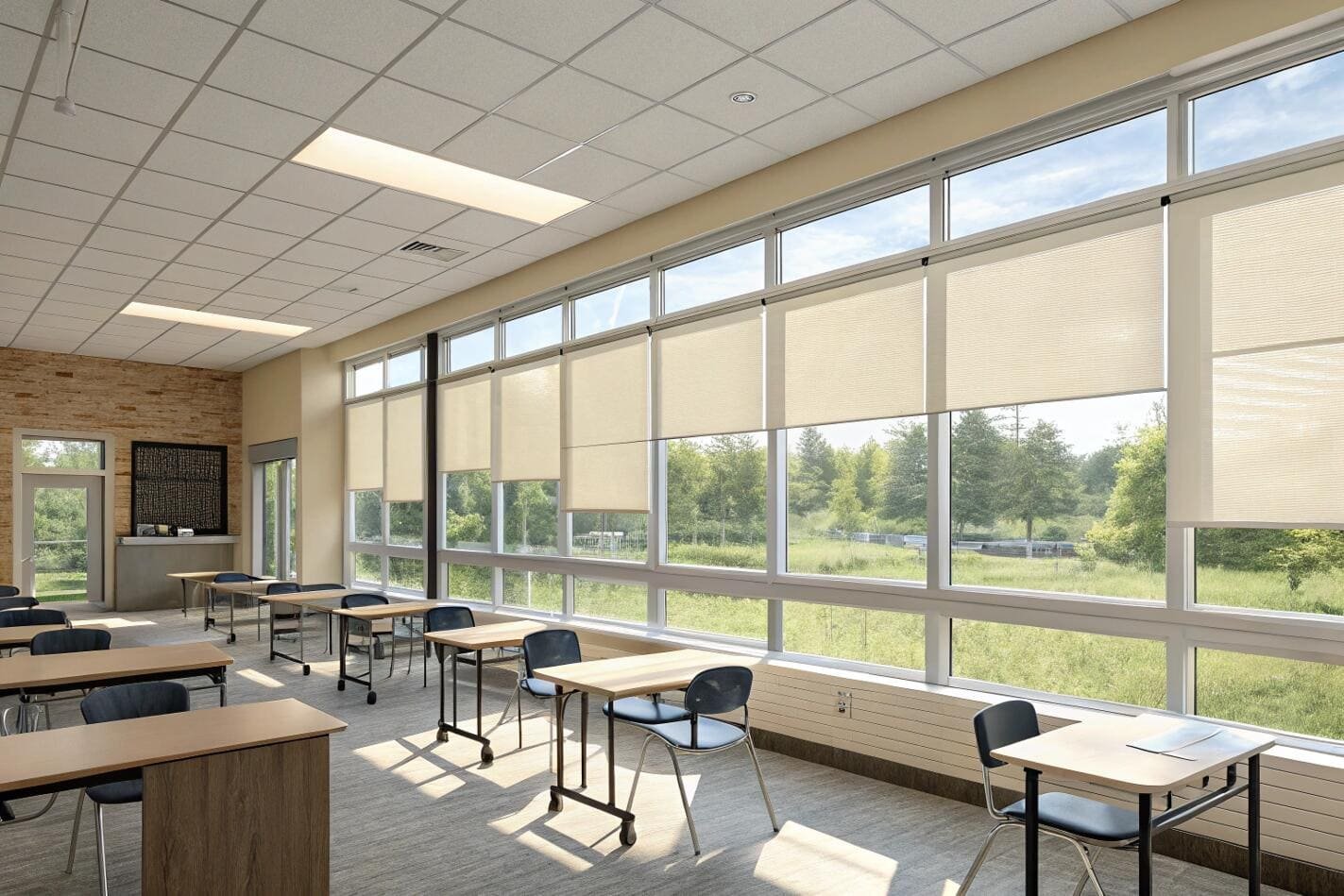
This credit is all about the well-being of the people inside the building. Even if the room's air temperature is a perfect 72°F, a person sitting next to a window superheated by the sun will feel uncomfortably hot. Conversely, sitting next to a freezing cold pane of glass in winter will make them feel chilled. Blinds, especially insulating styles like honeycomb shades, create a thermal buffer right at the window. When automated, the system can anticipate and prevent this discomfort. For example, it can progressively lower the blinds on a sunny facade as the sun's intensity increases, maintaining a comfortable radiant environment for those working nearby. This directly addresses the core intent of the credit.
What are the real costs and challenges of pursuing LEED certification?
You are advocating for a LEED-certified project, but the project owner and finance team see only a list of added expenses. To have a credible and productive discussion, you need to present a realistic picture of the actual costs and challenges involved.
The primary costs of LEED are "soft costs" for documentation, modeling, and consulting, and "hard costs" for upgrading systems and specifying premium products like motorized blinds. The biggest challenge is not the technology but the intensive process of coordination and documentation required across the entire project team.

It's crucial to be transparent about the investment required. Pushing for LEED without acknowledging the costs will damage your credibility. Based on my experience with dozens of these projects, the added cost for pursuing LEED certification, often referred to as the "green premium," can range from 1% to 5% of the total project budget, depending on the target certification level. A significant portion of this isn't for fancy materials, but for the experts needed to manage the process.
Breakdown of LEED-Related Investments
| Category | Examples | Nature of Cost |
|---|---|---|
| Hard Costs (Capital) | High-performance glazing, more efficient HVAC systems, low-flow plumbing fixtures, automated motorized blinds with high-performance fabrics. | Upfront investment in better physical components. Has a direct financial ROI through operational savings. |
| Soft Costs (Process) | USGBC registration/certification fees, LEED consultant fees, energy modeling services, commissioning agent fees. | Professional service fees required to navigate the complex LEED documentation and submission process. |
| Primary Challenge | Coordination & Documentation: Ensuring that every trade, from the architect to the electrician to the blind installer, understands and executes their part of the LEED strategy, and that all of it is perfectly documented. | This is a management and process challenge. It requires buy-in from all stakeholders from day one. |
How does LEED stack up against other green building certifications?
Your client is asking about other systems they've heard of, like BREEAM or the WELL Standard. You need to be able to confidently explain the key differences to help guide them to the right certification for their specific project goals.
LEED is the most globally recognized system and has a balanced focus on energy and environmental impact. BREEAM, its UK-based counterpart, is dominant in Europe and often more prescriptive. The WELL Building Standard focuses specifically and deeply on human health and well-being, often used to complement a LEED certification.
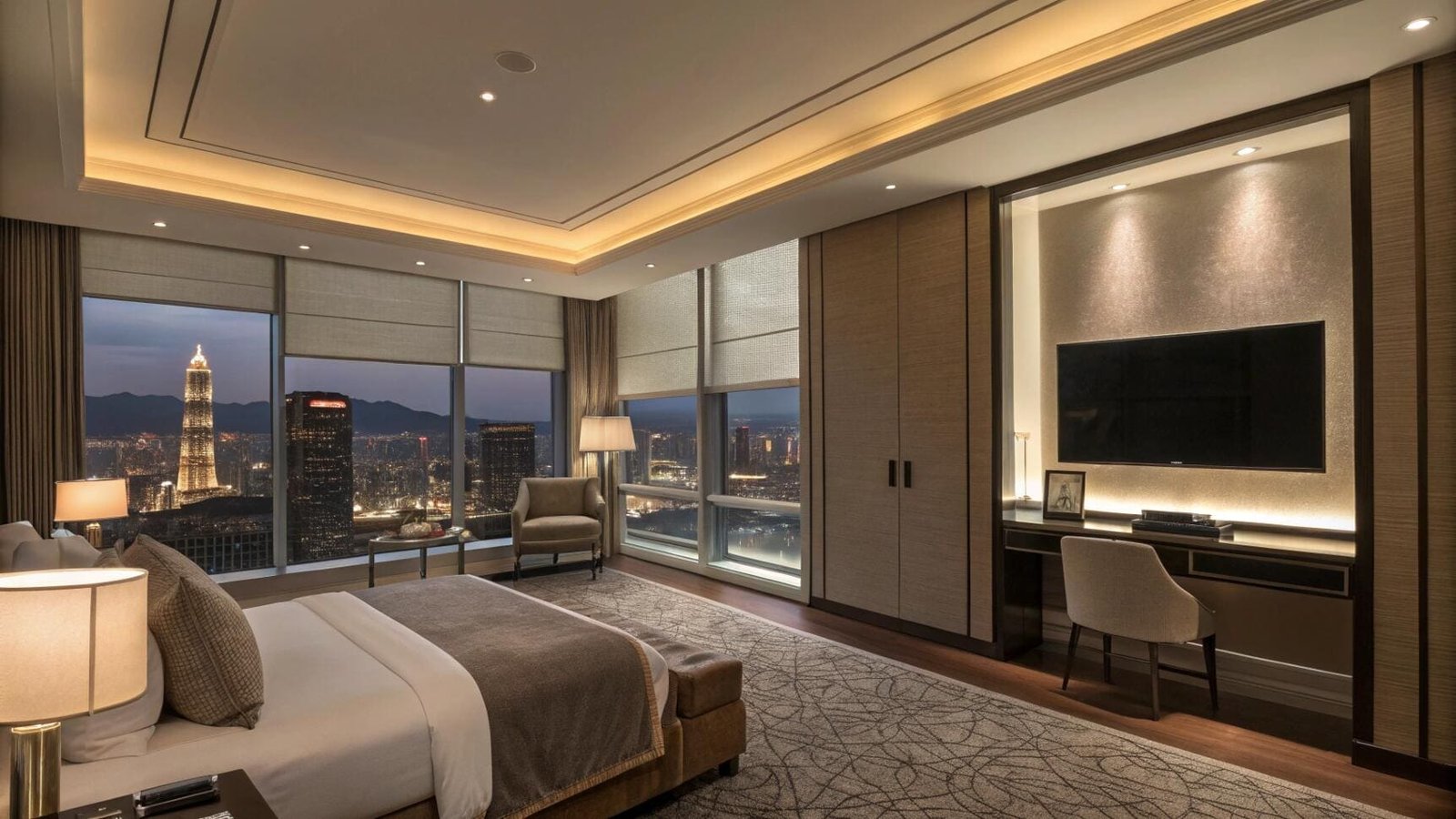
The choice of certification system depends entirely on the project's market, location, and primary objectives. There is no single "best" one. As a supplier, our products can contribute to all of these systems, but the documentation we provide might differ. For an American project focused on demonstrating overall sustainability and achieving high market recognition, LEED is almost always the default choice. If the client's primary brand message is about creating the healthiest possible workplace, then pursuing WELL certification in addition to or alongside LEED is a powerful strategy.
Comparing Major Green Building Systems
| System | Primary Focus | Geographic Strength | Key Characteristic |
|---|---|---|---|
| LEED | Balanced focus on energy, water, waste, and environment. | Global, dominant in North America. | Point-based system offering flexibility in how to achieve certification. |
| BREEAM | Broad environmental assessment across many categories. | UK and Europe. | More prescriptive than LEED; requires specific actions rather than just meeting performance targets. |
| WELL Building Standard | Human health and wellness (Air, Water, Light, Comfort, etc.). | Global. | Highly focused on the occupant experience. Often used in tandem with LEED or BREEAM. |
| Green Globes | General environmental design and operation. | North America. | Often perceived as a more streamlined and user-friendly online alternative to LEED. |
Conclusion
Specifying high-performance window blinds is not an optional accessory but a critical and cost-effective strategy for achieving LEED certification. They deliver measurable results, earning valuable points across multiple categories while tangibly improving the building's performance and the well-being of its occupants.
Achieve Your LEED Goals with Smarter Shading
Ready to specify a shading solution that delivers on performance and contributes directly to your LEED scorecard? My team specializes in providing the technical data, high-performance fabrics, and advanced motorization options you need to succeed.
Contact our project team for technical sheets and LEED documentation support at info@velablinds.com.
Extended FAQ Section
How many LEED points can window blinds actually earn for a project?
It's important to understand that you don't earn points for products, but for performance outcomes. Blinds are a strategy to achieve these outcomes. A well-designed automated shading system can be a key contributor to credits that total 15-20 points or more. For example, it's a major factor in the "Optimize Energy Performance" credit (up to 18 points) and helps secure single points in "Thermal Comfort," "Daylight," "Quality Views," and "Light Pollution Reduction." The final number of points depends on the project's integrated design, but a high-performance shading system is essential for maximizing your score in these areas.
Do I need motorized blinds for LEED, or are manual ones enough?
While high-performance manual blinds can contribute to credits like "Quality Views," their effect on energy and comfort credits is limited because it relies on inconsistent human behavior. For the "Optimize Energy Performance" credit, LEED energy models require reliable, consistent control that only an automated, motorized system can provide. Similarly, for "Light Pollution Reduction," a system programmed to close every blind, every night, offers a level of certainty that manual operation cannot. To maximize your point total, especially in the highest-value credits, motorization is a must-have specification.
What fabric properties are most important for LEED projects?
Three key technical values are critical for your specification. First is the Solar Heat Gain Coefficient (SHGC), which measures how much solar radiation passes through the window and becomes heat; a lower SHGC is better for earning energy credits. Second is Visual Light Transmittance (VLT), which is the percentage of visible light that passes through; a higher VLT can help with the Daylight credit. Finally, the Openness Factor (OF) determines the clarity of the view; a higher OF (e.g., 5-10%) is better for the Quality Views credit, while a lower OF (1-3%) offers more glare control. The right balance depends on the specific goals for each facade.
---
[^1]: Explore the U.S. Green Building Council's role in promoting sustainable building practices.
[^2]: Get insights into how LEED credits function and their role in certification.
[^3]: Explore the advantages of LEED certification, including energy efficiency and sustainability benefits.
[^4]: Discover how LEED certification leads to significant energy savings in buildings.
[^5]: Learn about solar heat gain and its impact on energy consumption in buildings.Partner with VelaBlinds for Your Next Project
Smart window treatments shouldn't be complicated. After working with 500+ distributors and contractors worldwide, I've streamlined the process to get you quality products, competitive pricing, and reliable support - every time.
Why project professionals choose VelaBlinds:
- ✅ Fast, Accurate Quotes - Detailed specs and pricing within 24 hours
- ✅ Transparent Pricing - No hidden fees, volume discounts clearly outlined
- ✅ Quality Assurance - Direct partnerships with certified OEM manufacturers
- ✅ Project Support - Dedicated account manager from quote to delivery
Start your next project:
📧 Quick Quote: Send your requirements to info@velablinds.com
📱 Direct Contact: WhatsApp +86 137 2012 8317
🌐 Browse Solutions: https://velablinds.com/
📁 Product Resources: Access spec sheets, catalogs & project files
Jimmy Chen, Founder
"I built VelaBlinds to solve the real challenges I faced as a project buyer - long lead times, unclear specs, and unreliable suppliers. Let's discuss how we can power your projects with smarter blinds."
Serving distributors and contractors across North America, Europe, and Australia since 2018.

